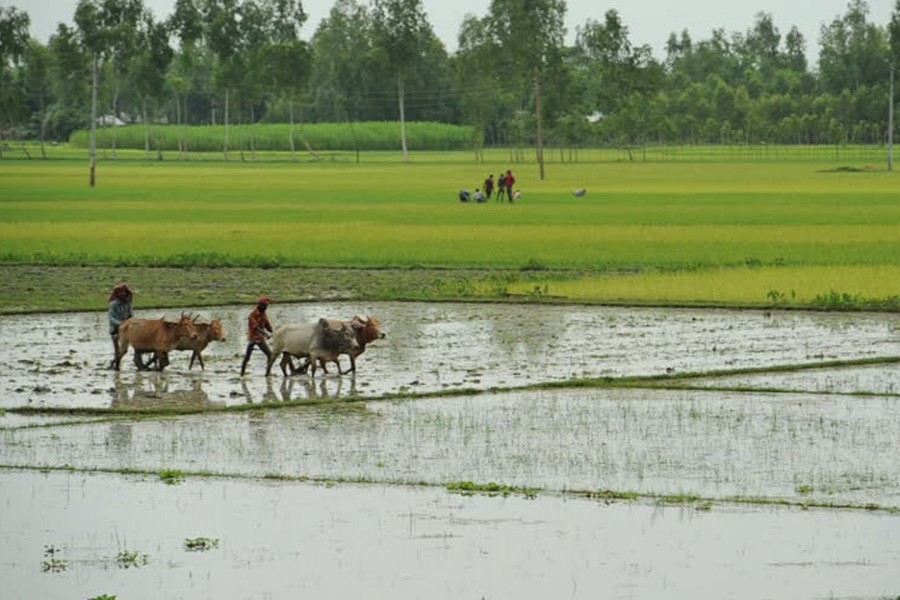All is not well in the agricultural sector. In sync with continuous decline in its contribution to the gross domestic product (GDP), per capita farm land holding has been shrinking for the last few decades. The rate of reduction in per-capita farm holding has got pace in recent years. The statistics might appear rather disturbing to many if the same are examined in the context of food and nutrition security of an ever-increasing population.
The state of per capita farm landholding and agricultural labourers has been depicted in a presentation made by the head of one of the country's leading farm research bodies at the Economic Relations Division. According to the presentation, the average per capita farm landholding, which was 1.7 hectares in 1960s, has now reduced to 0.10 hectares. Country's population is projected to reach 215 million in 2050. One can figure out well the overall land-man ratio with such a large population in place.
But despite continuous shrinking of farm land -- an estimated 1.0 per cent arable land is lost every year to housing and other physical infrastructural facilities for a rising population-the country has made notable achievements in cereal, vegetables and fruit production. Bangladesh is now near self-sufficient in food as production of cereals has increased more than threefold over the last four decades. (The claim some quarters make about self-sufficiency in food is apparently exaggerated. Note the near-crisis situation in the event of even a partial loss of a major rice crop.)
There is no denying that per acre yield of rice, in particular, has gone up substantially with greater adoption of modern farm technology. But that has not been without a cost. As a natural consequence of expansion of rice crop acreage, particularly during the Rabi season, areas under some other crops have shrunk and the country is now largely dependent on their import. However, such a development is considered inevitable in land-scarce Bangladesh. Yet, adoption of modern farm technology here has not been to the fullest extent. There are flaws in the use of improved agricultural inputs; and farm mechanisation is progressing slowly.
In the present scenario, Bangladesh is left with one option, i.e., increased cropping intensity - to raise its farm-level productivity. The cropping intensity is now estimated at around 127 per cent. But the intensity varies from one area to another because of a number of factors, including locations of land and climatic conditions. Yet the cropping intensity, according to experts, can be increased further in many areas to offset the impact of loss of farm land. But while doing so, there is a need to exercise caution.
Soil fertility comes under threat when the cropping intensity is raised rather imprudently. It is thus important to give the cropping areas some rest and maintain nutritional balance and other natural properties of soil, among others. The task is difficult and it may be even more difficult in the future with changing circumstances. The policymakers would have to devise best and balanced ways to compensate for the loss of production due to the shrinking of farm land.


